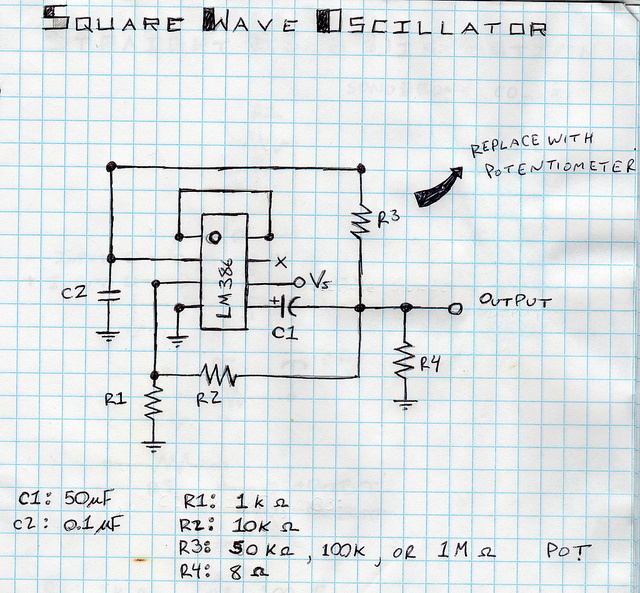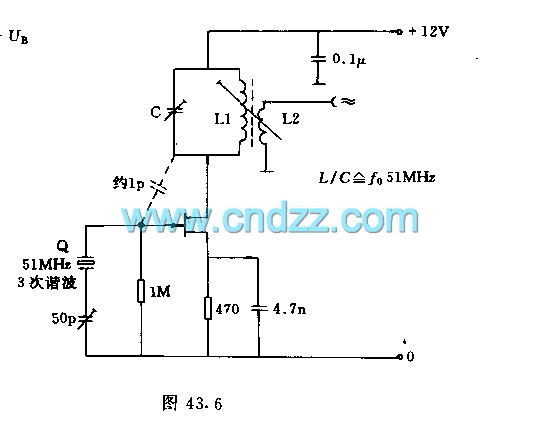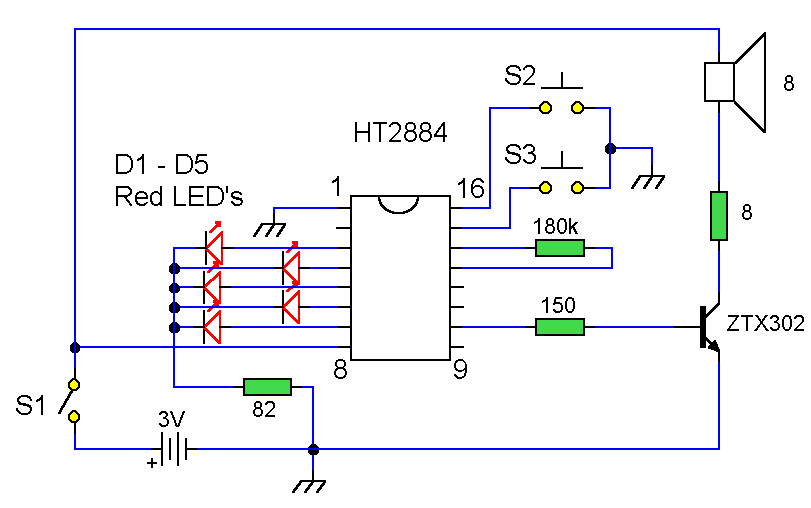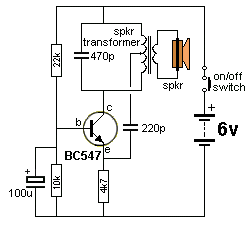
square wave oscillator circuit

This is a square wave oscillator (digital, similar to 8-bit music). It is based on the LM386 amplifier integrated circuit, which is also the foundation for the mini guitar amplifier. The design includes a simple power switch connected to the battery, a potentiometer for tone adjustment, and a normally closed momentary switch. The momentary switch is linked to the signal output. It is normally closed, meaning that pressing it cuts off the signal, while releasing it allows the signal to pass through to the amplifier, creating interesting sound effects. A diagram illustrates the components connected to the integrated circuit, with red X's marking non-connections and black dots indicating connections. Additionally, there is a second video featuring another square wave oscillator, equipped with keys for switching between different tones and a potentiometer for overall tone adjustment. Each key functions as a normally closed momentary switch, with a resistor connected to each switch that generates a tone when pressed. Further explanations will be provided later or in a video.
The square wave oscillator circuit is designed to generate a digital square wave signal, which is particularly useful for applications that require simple tone generation, such as synthesizers or sound effects. The core of the circuit is the LM386 amplifier, which is a low-voltage audio power amplifier that can drive small speakers or headphones. The power switch allows for easy operation, ensuring that the device can be turned on and off conveniently.
The potentiometer in the circuit serves as a tone control, enabling the user to adjust the frequency response of the oscillator. This feature is essential for tailoring the sound output to the desired tonal quality. The normally closed momentary switch adds an interactive element, allowing the user to momentarily stop the sound when pressed, which can be useful for creating rhythmic patterns or sound effects.
In the schematic, the connections are clearly marked, with non-connections indicated by red X's to avoid confusion during assembly. The black dots signify where wires should be connected, ensuring that the circuit functions as intended. The additional square wave oscillator described in the second video expands on the original design by incorporating keys that allow for switching between different tones, enhancing the versatility of the device. Each key, when pressed, activates a resistor that generates a distinct tone, demonstrating a practical application of momentary switches in sound synthesis.
Overall, this circuit design represents a straightforward yet effective approach to generating square wave signals, suitable for various electronic music applications or sound experimentation.This is a square wave oscillator (digital, like 8-bit music). It`s based around the LM386 amplifier I. C. , which is what the mini guitar amplifier was based on. It has a simple power switch connected to the battery, a potentiometer for adjusting the tone, and a normally closed momentary switch. The momentary switch is connected to the signal output . It`s normally closed so when you press it, the signal is cut off but when you release it, the signal passes through again to your amplifier. This can create some cool sounds. This is a diagram showing the components wired to the I. C. The red x`s indicate places where the wires don`t connect and the black dots indicate connections. Feel free to download the image here. This second video contains another square wave oscillator but with keys to jump to different tones and a potentiometer to adjust the overall tone.
The keys are actually normally closed momentary switches. A resistor is connected to each switch so when it is pressed, it generates a tone. It`s hard to explain here so I`ll try to explain it later or in a video. 🔗 External reference
The square wave oscillator circuit is designed to generate a digital square wave signal, which is particularly useful for applications that require simple tone generation, such as synthesizers or sound effects. The core of the circuit is the LM386 amplifier, which is a low-voltage audio power amplifier that can drive small speakers or headphones. The power switch allows for easy operation, ensuring that the device can be turned on and off conveniently.
The potentiometer in the circuit serves as a tone control, enabling the user to adjust the frequency response of the oscillator. This feature is essential for tailoring the sound output to the desired tonal quality. The normally closed momentary switch adds an interactive element, allowing the user to momentarily stop the sound when pressed, which can be useful for creating rhythmic patterns or sound effects.
In the schematic, the connections are clearly marked, with non-connections indicated by red X's to avoid confusion during assembly. The black dots signify where wires should be connected, ensuring that the circuit functions as intended. The additional square wave oscillator described in the second video expands on the original design by incorporating keys that allow for switching between different tones, enhancing the versatility of the device. Each key, when pressed, activates a resistor that generates a distinct tone, demonstrating a practical application of momentary switches in sound synthesis.
Overall, this circuit design represents a straightforward yet effective approach to generating square wave signals, suitable for various electronic music applications or sound experimentation.This is a square wave oscillator (digital, like 8-bit music). It`s based around the LM386 amplifier I. C. , which is what the mini guitar amplifier was based on. It has a simple power switch connected to the battery, a potentiometer for adjusting the tone, and a normally closed momentary switch. The momentary switch is connected to the signal output . It`s normally closed so when you press it, the signal is cut off but when you release it, the signal passes through again to your amplifier. This can create some cool sounds. This is a diagram showing the components wired to the I. C. The red x`s indicate places where the wires don`t connect and the black dots indicate connections. Feel free to download the image here. This second video contains another square wave oscillator but with keys to jump to different tones and a potentiometer to adjust the overall tone.
The keys are actually normally closed momentary switches. A resistor is connected to each switch so when it is pressed, it generates a tone. It`s hard to explain here so I`ll try to explain it later or in a video. 🔗 External reference





